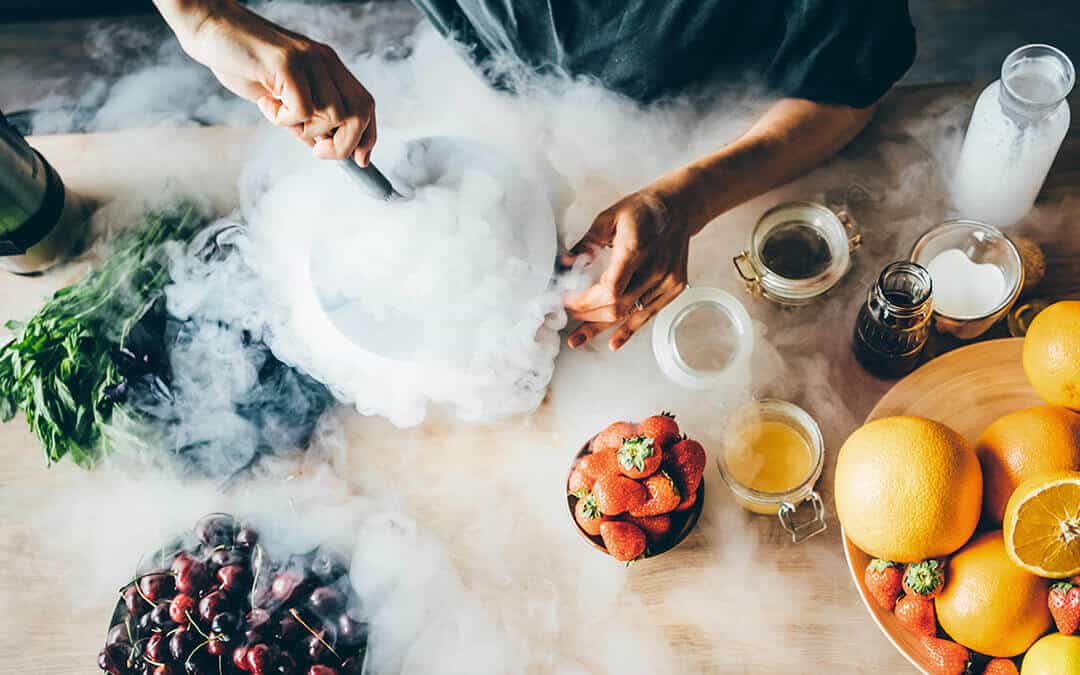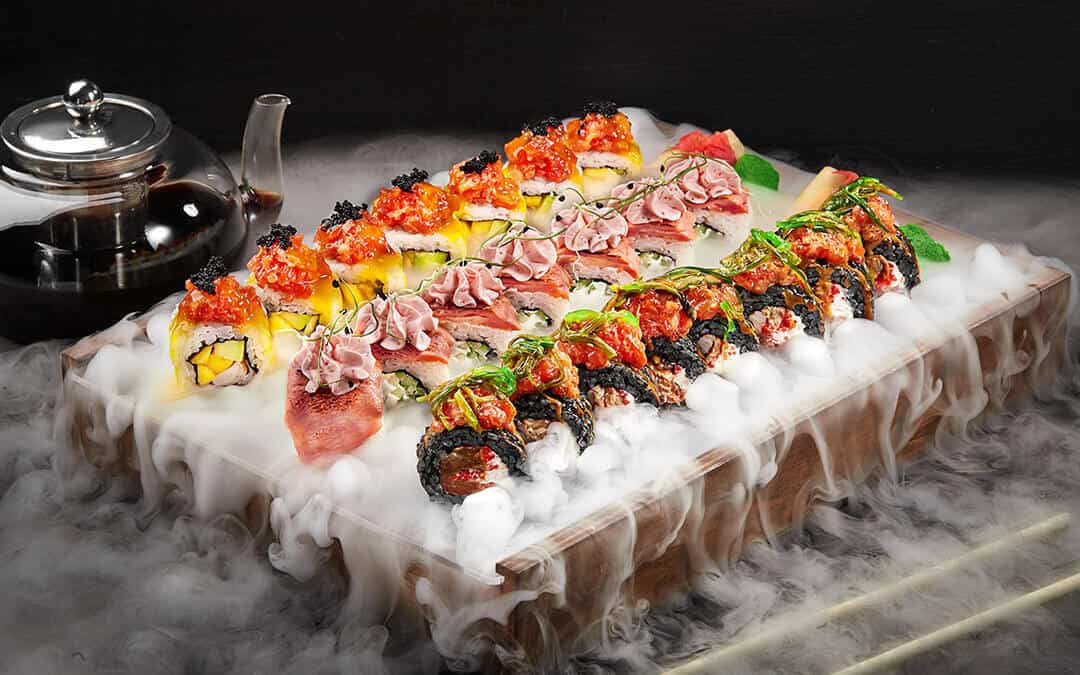You’ve probably seen them in shopping malls, amusement parks, fairs, and restaurants: exciting, unusual frozen desserts prepared using liquid nitrogen. Because of the extremely low boiling point–a whopping -196°C, or -320°F–liquid nitrogen has long been used to preserve foods for manufacturing, but lately, foods prepared with liquid nitrogen have become a fad for the aesthetic effect they can have on food.
Liquid Nitrogen Temperature
The temperature of liquid nitrogen freezes food and drinks differently than typical freezing methods, creating different consistencies and textures, as well as creating a unique vapor that chefs have used for “dragon’s breath” snacks. When someone bites into a dragon’s breath snack, it releases a cloud of vapor that creates the effect of smoke coming out of their mouth.
The dragon’s breath, or heaven’s breath, trends have been made using ice creams, cereal treats, cheese puffs, and drinks–both alcoholic and non-alcoholic.
Liquid Nitrogen Food

The food prepared in liquid nitrogen and the vapor effect are both completely safe, but without the knowledge of safe handling practices, accidental ingestion or mishandling of a snack made in liquid nitrogen could cause injuries or trauma, such as serious as bowel perforation or asphyxiation due to the extreme cold.
So, as fun as the trend is, and as cool as the Instagram pictures of a still-bubbling drink or smoking bowl of ice cream might be, the FDA has issued an official warning against ingesting foods prepared with liquid nitrogen at the point of sale.
If the handlers preparing the food are doing so within the recommended guidelines and the consumers wait a sufficient amount of time before consuming, food prepared with liquid nitrogen is considered safe.
But there are several recommendations for consumers and preparers to follow.
FDA Recommendations
There are several recommendations from the FDA to ensure that using liquid nitrogen is as safe as possible.
- Use only food-grade nitrogen when preparing food or drinks with liquid nitrogen
- No residue of liquid nitrogen should remain in the service container, and no liquid refill should be provided
- The opening of the serving container should be narrow to prevent consumers from pouring the liquid into their hands
- Liquid nitrogen should be picked up one piece at a time and only while using a utensil, never with bare hands
- Clear instructions should be provided to consumers at the point of sale about the dangers of liquid nitrogen and the precautions that should be taken
Accidental contact exposure to liquid nitrogen could cause burns or frostbite, and accidental inhalation or ingestion cause asphyxiation and gastric or airway perforations due to the extremely low temperatures. There have been several reports of injuries and trauma as a result of liquid nitrogen.
One fourteen-year-old suffered a chemical burn on her thumb after handling a liquid nitrogen dessert at a fair, and the doctor treating her allegedly told her that she could’ve lost her thumb had she not sought out medical treatment. Another woman required part of her stomach to be removed after ingesting liquid nitrogen caused her stomach wall to perforate.
Outside of burns and gastric or airway perforations, other potential problems caused by liquid nitrogen include rapid onset of abdominal pain, distension, and respiratory distress, especially in those with asthma. The difficulty breathing in particular, often caused by inhaling the vapor caused by liquid nitrogen too soon, can be life-threatening.
How Can Consumers Be Safe with Food Grade Liquid Nitrogen?

It can be extremely unsafe to ingest foods prepared or frozen with liquid nitrogen immediately at the point of sale or after it’s prepared. It might be hard to resist temptation when something looks flashy and delicious, but it’s incredibly important to allow time for any residual liquid nitrogen to evaporate before ingesting. Otherwise, you risk any number of injuries or burns.
If you have waited the appropriate amount of time for the last of the liquid nitrogen to completely dissolve, then there is no threat of injury and the FDA’s warning is not applicable.
Some frozen confections are prepared in such a way that the liquid nitrogen is completely evaporated by the time it reaches the customer. These treats are also exempt from the FDA’s warning.
Be aware of the potential dangers of liquid nitrogen, do research, be cognizant of your surroundings, and, if you deem it safe, enjoy!
For more than eighty years, CalOx has been delivering high-quality medical- and food-grade liquid nitrogen to businesses and communities in Southern California. With trained technicians, we can help your business with everything from regular deliveries to storage, delivery and handling equipment, along with training and maintenance.
